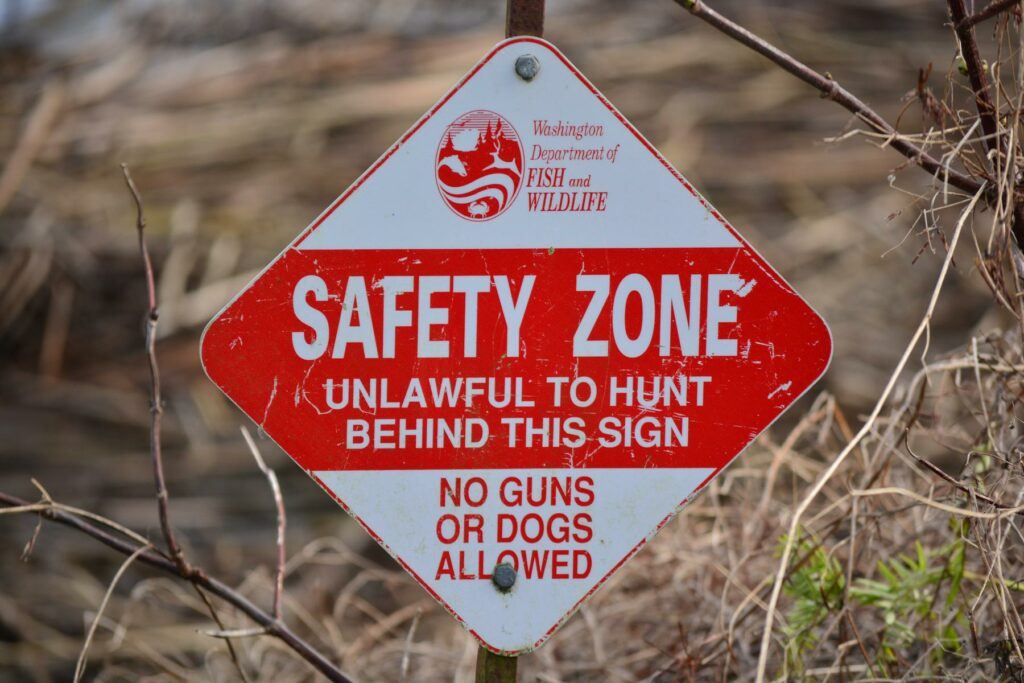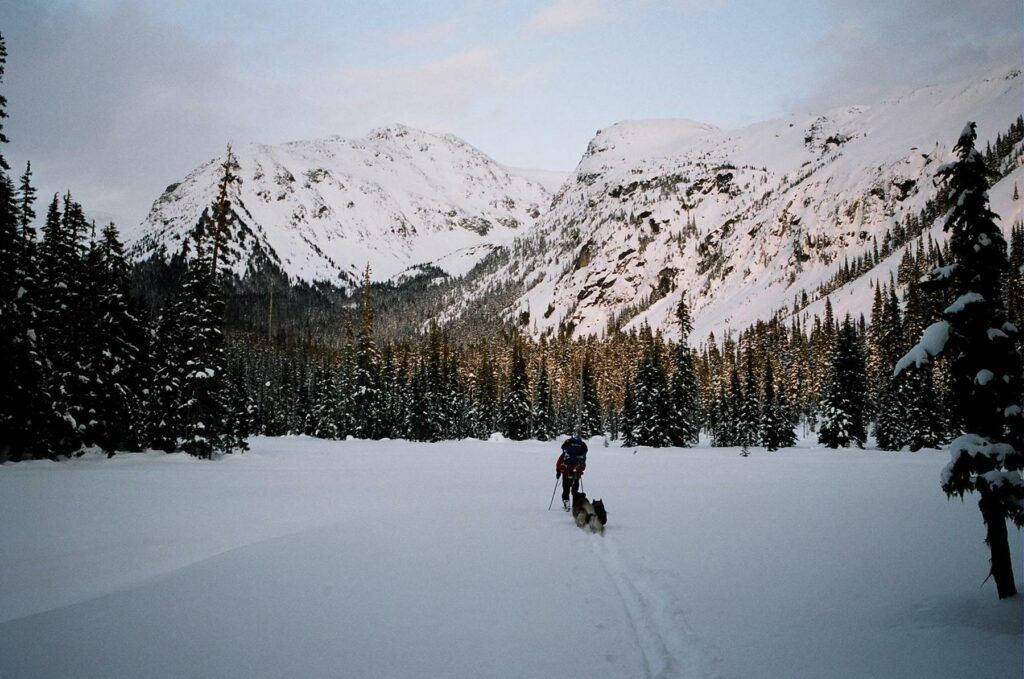As a hiking enthusiast, there is no better feeling than immersing yourself in nature and taking in all the breathtaking views. However, embarking on a hike comes with its own set of challenges, especially when it comes to encountering wildlife. Whether you’re a seasoned hiker or a beginner, it’s important to be prepared for any unexpected encounters with animals. In this blog post, we’ll be sharing an ultimate checklist for wildlife safety while hiking that will help you stay safe and confident on your next adventure. So, grab your pen and paper and get ready to master the art of wildlife safety!

Understanding the Risks: Common Wildlife Encounters While Hiking
Wildlife encounters while hiking are a common occurrence, and it’s important to be aware of the risks associated with them. One of the biggest dangers is surprising animals in their natural habitat which can lead to defensive behavior such as charging or biting. Predatory wildlife, such as bears or cougars, also pose a threat if they perceive you as prey. Snakes and other venomous creatures are also present on many trails.
It’s essential to recognize that you’re entering wild territory when hiking, even if it’s within an urban area. With proper preparation and awareness, however, you can minimize these risks and still enjoy your time in nature. Remember that wildlife safety is everyone’s responsibility; by following best practices for avoiding animal encounters and knowing how to respond appropriately if you do happen upon an animal, you’ll help protect both yourself and the ecosystem around us.

Preparing for the Trail: Essential Gear and Safety Equipment
Essential Gear and Safety Equipment for Wildlife Safety While Hiking
When preparing for a hike in areas with potential wildlife encounters, it’s important to pack the right gear and safety equipment. First things first, always carry bear spray in an easily accessible location on your person. Other essential items include sturdy hiking boots (which can also help prevent snake bites), bright clothing or accessories (to make yourself more visible to wildlife), and a loud whistle or horn (to alert nearby animals of your presence). A walking stick can also be helpful both as a tool for traversing difficult terrain and as something to use if you need to defend yourself from an animal attack. Finally, consider bringing along binoculars or a camera with zoom capabilities so that you can observe wildlife from a safer distance. With the proper gear at hand, you’ll feel much more equipped to handle any unexpected wildlife situations while on the trail.
Know Before You Go: Researching Wildlife in Your Hiking Area
Researching wildlife in your hiking area is an essential part of preparing for a safe and enjoyable hike. Wildlife behavior patterns and habitat preferences vary from region to region, so it’s important to know what you might encounter on the trail. Start by researching the different species of animals that are common in the area where you plan to hike. Some national parks and forests have websites or visitor centers with information about local wildlife populations.
Additionally, check if there are any current warnings or advisories regarding wildlife activity in your chosen hiking area. These alerts usually appear on park service websites or social media pages when necessary, such as during breeding seasons for certain animals or when there has been recent food scarcity due to weather conditions.
Taking time beforehand to understand the typical behaviors of local fauna can help hikers be more prepared and make informed decisions while on the trail.
On the Trail: Best Practices for Avoiding Wildlife Encounters
On the Trail: Best Practices for Avoiding Wildlife Encounters
Hiking in wildlife areas can be a thrilling experience, but it’s important to take precautions and avoid dangerous animal encounters. One of the most effective ways to stay safe is by making noise while on the trail – this alerts animals that humans are nearby and gives them time to move away. Whistling or talking loudly with your hiking partners is often enough.
Additionally, be aware of signs of recent wildlife activity, such as freshly dug holes or tracks on the trail. If you have a pet with you, keep it leashed at all times and close by – unleashed pets can attract unwanted attention from predators like coyotes or bears.
Finally, make sure to hike during daylight hours when visibility is better and always stay on designated trails to minimize disturbance to wildlife habitats. By following these best practices, you’ll be able to enjoy nature safely while minimizing any negative impact on local wildlife populations.

What to Do if You Encounter Wildlife: Tips for Staying Safe
Understanding Wildlife Behavior: How to Read Animal Signs and Signals
When hiking in areas with potential wildlife encounters, it’s important to be able to read animal signs and signals. This can help you identify potential danger and take appropriate action. Look for tracks, scat, and other signs of recent animal activity. Listen for sounds such as rustling bushes or twigs snapping. Keep an eye out for warning signs such as raised fur or feathers, hissing, or growling. If you see any of these signs, back away slowly and give the animal plenty of space. Remember to always stay alert and aware of your surroundings while hiking in wildlife areas.
Dealing with Dangerous Wildlife: Tips for Avoiding Confrontation
When hiking, it’s important to know how to avoid confrontations with dangerous wildlife. Firstly, make noise while walking through areas where they may be present. This will give animals like bears or cougars a warning that you are in the area and allow them to move away before you get too close. It’s also important not to surprise any wildlife by staying on designated trails and keeping an eye out for signs of animal activity such as scat or tracks. Avoiding feeding or approaching any wildlife is crucial as well because it can lead them to become habituated to humans and pose a greater threat in the future.
Responding to Wildlife Encounters: Step-by-Step Guide for Staying Safe
If you encounter wildlife while hiking, it’s important to stay calm and follow these steps for ensuring your safety. First, assess the situation: Is the animal showing signs of aggression or simply passing through? If it seems dangerous, slowly back away without turning your back on it. Speak loudly and firmly to let the animal know you are there. Avoid eye contact, as some animals perceive this as a threat.
In case of bear encounters, carry bear spray and use it if necessary. Make yourself appear larger by raising your arms above your head and making noise with pots or pans if needed. If you’re dealing with a snake bite or venomous spider bite, try to identify the species quickly so that medical professionals can administer proper treatment when available.

After the Hike: Debriefing and Reflecting on Your Experience
After the hike, it’s important to take some time to debrief and reflect on your experience. This is a great opportunity to evaluate what went well and what could have been improved upon in terms of wildlife safety while hiking. Did you encounter any wildlife? If so, how did you handle the situation? Were there any gear or safety equipment that you wish you had brought with you? Reflecting on these questions can help you better prepare for future hikes.
It’s also important to properly clean and store your gear after the hike. This includes removing any food or scented items from your backpack and tent, as well as cleaning any cooking utensils thoroughly. By doing so, you can avoid attracting wildlife to your gear and potentially putting yourself in danger.
Lastly, consider sharing your experience with others. Whether it’s through social media or a hiking group, sharing your knowledge and lessons learned can help others stay safe while enjoying the great outdoors.
Continuing Your Education: Resources for Learning More About Wildlife Safety While Hiking
Resources for Learning More About Wildlife Safety While Hiking:
If you’re interested in learning more about wildlife safety while hiking, there are many resources available to you. Online courses are a great way to gain in-depth knowledge on the subject. The National Outdoor Leadership School (NOLS) offers an online course on wilderness medicine that covers wildlife safety as well. You can also find free online resources from organizations like the National Park Service and the American Hiking Society.
Another way to learn more about wildlife safety while hiking is to attend a workshop or training. Many outdoor education centers and wilderness schools offer workshops on wildlife safety and other related topics. These workshops often include hands-on training and practice scenarios, which can be very helpful in preparing for real-life situations.
Finally, consider joining a local hiking or outdoor club. These groups often have experienced members who can share their knowledge and expertise with others. They may also organize group hikes or training sessions focused on wildlife safety.
Remember, the more you know about wildlife safety while hiking, the better prepared you’ll be to enjoy your time on the trail!
In conclusion, hiking is a wonderful way to experience nature and get some exercise. However, it’s important to also remember that we are sharing these trails with the local wildlife. By understanding the common risks and taking necessary precautions, you can enjoy your hike while also staying safe.
Remember to always come prepared with essential gear and safety equipment, research the wildlife in your hiking area beforehand, practice best avoidance practices while on the trail, have a plan for encountering wildlife if it does happen and reflect on your experiences after every hike.
If you found this article helpful or informative, be sure to check out our other content for more tips and tricks on making the most of your outdoor adventures! Happy hiking!



